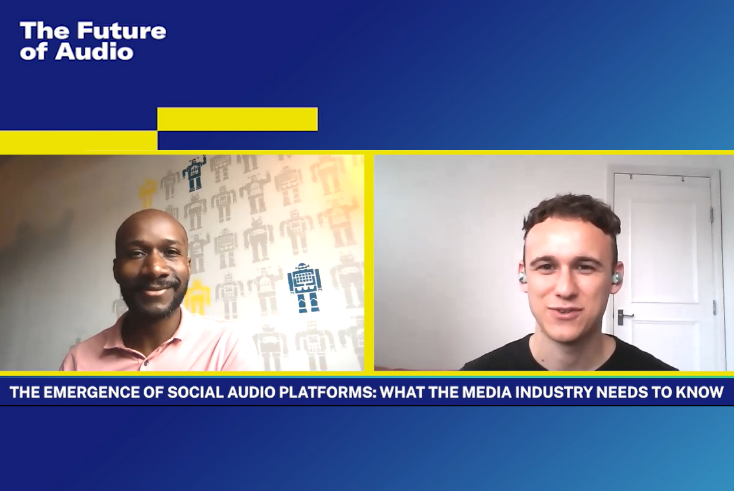Why brands need more opportunities to make most of Clubhouse

Audio-only social media app Clubhouse is “unlocking a different type of conversation that even podcasting isn’t getting out of people”, media strategist Dino Myers-Lamptey explained at The Future of Audio.
Speaking to Mediatel News at the virtual audio advertising conference, the founder of strategic creative agency The Barber Shop pointed to the opportunities for advertising and marketing around “social audio”.
However, Myers-Lamptey acknowledged there is an ongoing debate about the role brands can play on the platforms.
“More opportunities need to be created for brands to participate, but also the reasons for being there need to be well structured,” he said.
“That could be a room sponsored by, or curated by, the brand, where it can play more of a passive role without dictating the topics of discussion. The brand can facilitate something that people want to hear about and what it wants to involve itself with.
“I think there is a natural home and place for the kind of brand people really want to hear about, particularly if they are at the forefront of thinking in an area, investing in innovation, tech and driving things forward.”
Interactive medium enables greater collaboration
On platforms like Clubhouse, brands could facilitate discussions between groups of people, as opposed to dictating topics in branded podcasts, for example.
Myers-Lamptey said: “It gives experts and influencers a different way to engage with their audience. It goes beyond just taking a photo, or a product unpackaging. It allows you to collaborate and develop ideas and thoughts together.”
He added: “It is good for progressing partnerships, you can network on the fly, and access to people who are likeminded is a great advantage. There are real differences in terms of what it brings out from people in terms of conversation and insights.”
Clubhouse launched in March 2020 as an invitation-only social media app for iOS where users can communicate in voice chat rooms that accommodate groups of up to 5,000 people.
In just one year, the app raised Series C funding that valued the company at $4bn, which put it on par with the likes of tech apps Airbnb and Uber.
However, the start-up has since faced intense competition from social media incumbents Twitter, Spotify and Facebook, which scrambled to release similar products. Telegram, Discord, Slack and LinkedIn are expected to follow with their own offerings.
Intimate media environment should be handled with care
But Myers-Lamptey warned advertisers away from using social audio platforms to push a product: “The advertising opportunity would be better received if it is in a discreet sponsoring or supporting role.”
He went on: “It’s quite a personal medium. We found that if it’s a founder of a business talking, then it was great in a sense in terms of they were representing the brand, they could talk very naturally and it fitted in, it was very personal and it seemed very natural to what Clubhouse is about. But the idea of a brand voice and a brand speaking in that position just didn’t sit well.”
Instead, think about it in a similar way to how you think about podcast advertising, Myers-Lamptey advised.
“In terms of live reads and sponsored endorsements, where ultimately you are borrowing the credibility of the host, I could see that working. Maybe it is a conversation related to their expertise or their field, and if it is genuine in that sense, if the host can talk about it because they feel it is a benefit to the people listening to that show, then I can see that kind of role working.”
In a similar way to how Instagram now requires disclosure when users are advertising, Myers-Lamptey recommended this would have to be flagged clearly as advertising: “You don’t want to blur the lines and suddenly be in a situation where users are not trusting what [experts and influencers] are saying, because they know they’re being paid for it.”
The interview was the final talk in the fifth session at The Future of Audio on 24 June, in which speakers discussed the rise of innovative technology within the audio space and there was a presentation from Google on the audio opportunity for publishers.
The conference also featured presentations, panels and interviews about broadcast and digital radio, podcasts, sonic branding and voice technology.
You can watch the session on-demand here.




